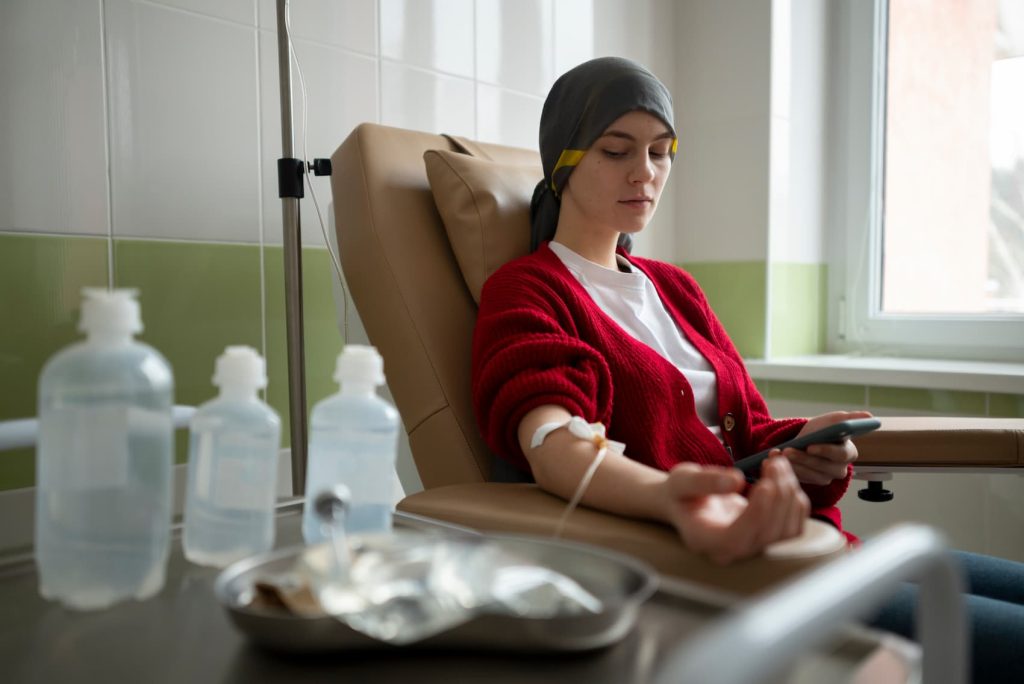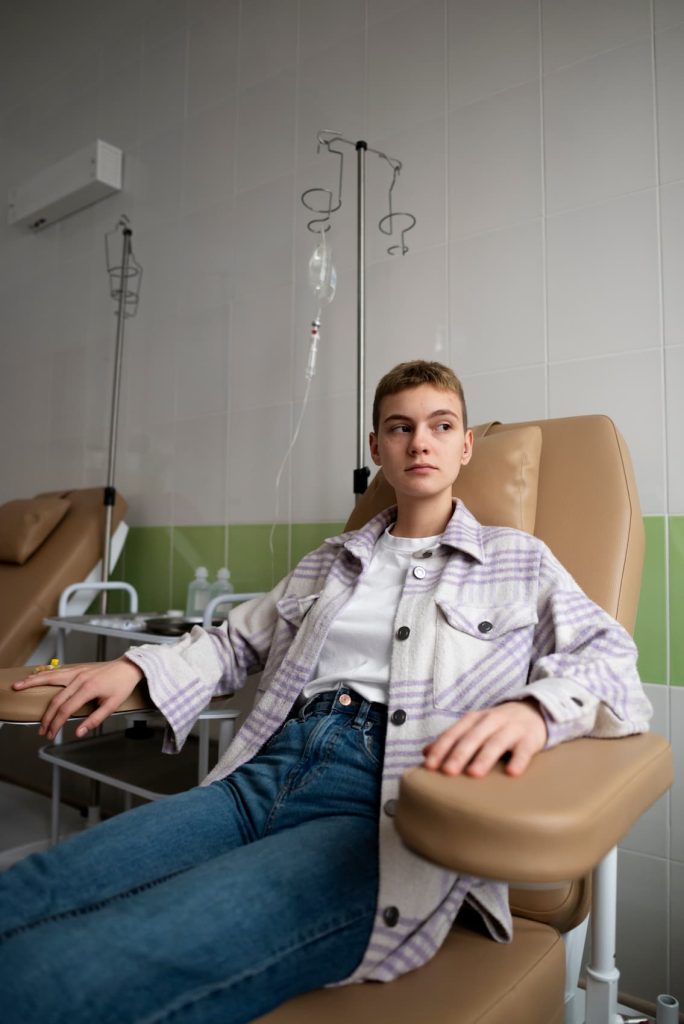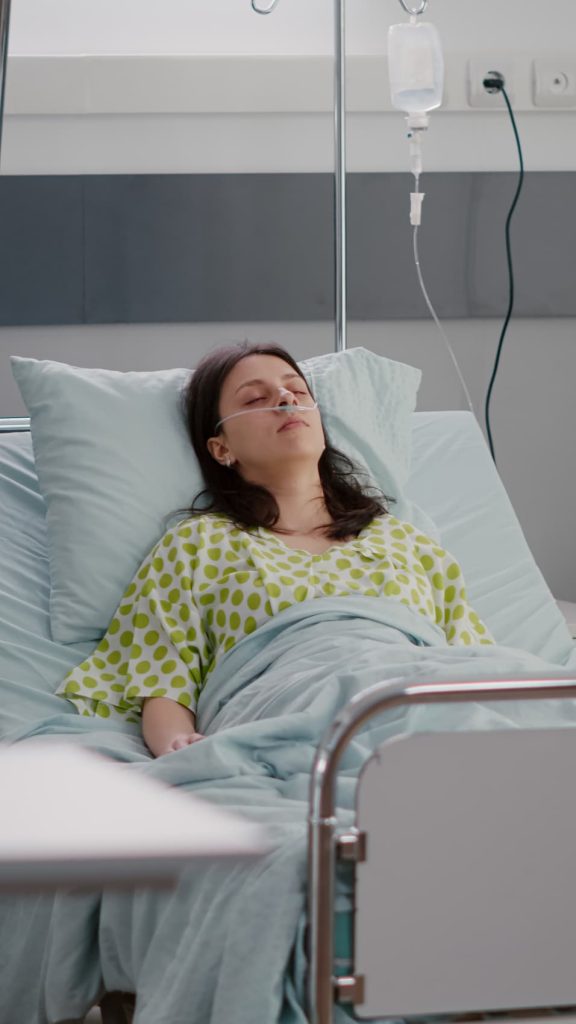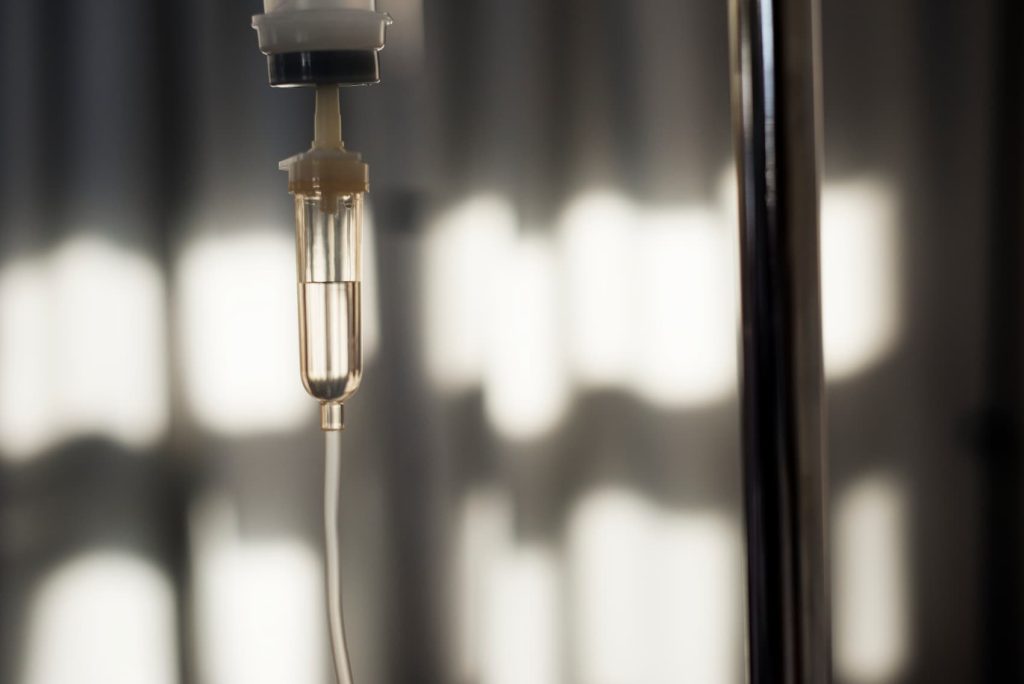Low-dose chemotherapy is a way of giving established anti-cancer medicines in smaller amounts, often more frequently, with the goal of controlling cancer while seeking a different balance of benefit and side effects than standard (higher-dose, cycle-based) chemotherapy. You may also see it called metronomic chemotherapy in medical journals. At the Cancer Center for Healing in Irvine, CA, we practice an integrative approach: pairing the best of conventional oncology with supportive, evidence-informed therapies to help you tolerate treatment and preserve quality of life. Below, we explain how chemotherapy works, what “low-dose” means in practice, when clinicians may consider it, how it can complement other therapies, and what the science says today.

Chemotherapy drugs damage cancer cells’ ability to grow and divide. Because they also affect some healthy fast-dividing cells (such as hair follicles and the lining of the digestive tract), they can cause side effects such as hair loss, mouth sores, nausea, diarrhea or constipation, and fatigue. As the National Cancer Institute puts it, chemo “kills or slows the growth of healthy cells that grow and divide quickly,” which is why side effects occur; many improve after treatment ends. (Cancer.gov)
The dose and schedule of chemotherapy are not afterthoughts—they’re central to how the drugs behave in your body. Traditional regimens give higher doses every 2–3 weeks with rest periods in between. By contrast, low-dose (metronomic) chemotherapy uses lower doses given continuously or on frequent, regular schedules with minimal breaks. A widely cited clinical review defines metronomic therapy as “repeated administration of anti-neoplastic drugs at comparatively low doses frequently and without long drug-free period.” (PMC)
Cancer is not a single disease but a collection of diseases with shared biological “hallmarks”—recurring capabilities that tumor cells acquire as they evolve (for example: sustaining growth signals, resisting cell death, inducing blood-vessel growth, and evading the immune system). The 2022 update to the Hallmarks of Cancer adds new dimensions (such as unlocking phenotypic plasticity and nonmutational epigenetic reprogramming), reflecting how complex—and adaptable—tumors can be. Understanding this complexity helps explain why oncologists deploy different dosing strategies, drug combinations, and supportive therapies across the cancer journey. (PubMed)
“The hallmarks of cancer… distill the vast complexity of cancer phenotypes and genotypes into a provisional set of underlying principles.” (PubMed)
Metronomic dosing began as an anti-angiogenic idea—starving tumors by targeting the endothelial cells that make new blood vessels—then expanded to include immune modulation and direct tumor effects at low concentration. Research suggests these lower, steadier exposures can suppress tumor blood-vessel growth, re-shape the tumor microenvironment, and potentially reduce the emergence of drug resistance compared with big peaks and valleys from intermittent high doses.
“Metronomic chemotherapy… has been shown to inhibit angiogenesis and, consequently, tumor growth by targeting vascular endothelial cells.” (PMC)

Key proposed mechanisms of low-dose (metronomic) chemo include the following:
Important context: While metronomic strategies are scientifically plausible and supported by growing studies, they are not automatically “gentle” or side-effect-free, and they are not standard of care for every cancer. Treatment choice depends on cancer type and stage, prior therapies, biomarkers, patient goals, and clinical guidelines.
How Low-Dose Regimens Compare with Conventional Dosing
Conventional (higher-dose, cycle-based) chemotherapy aims for maximum tumor kill per cycle and is the established standard in many settings (for example, adjuvant therapy after surgery for breast, colon, or lung cancers; first-line treatment for certain lymphomas). Because higher doses can injure more healthy cells, side effects may be more pronounced—but they’re also anticipatable and manageable, and many people complete treatment successfully with supportive care. The NCI and American Cancer Society provide accessible overviews of common side effects and how your oncology team prevents and treats them.
“The side effects of chemo are different for each person… [and] depend on the type of cancer, types of chemo and dose.” (American Cancer Society)
Low-dose (metronomic) chemotherapy focuses on disease control and tolerability, sometimes allowing oral administration at home, and may pair with other systemic agents or local treatments. In some studies and case series, metronomic regimens have shown activity in hard-to-treat or heavily pretreated cancers; in others, they serve as maintenance therapy after initial tumor shrinkage. Still, evidence is heterogeneous by cancer type, and metronomic regimens are often considered when standard options have been exhausted or when a patient’s health, goals, or toxicity profile favor gentler intensity. (Your oncologist will review where this approach fits for your diagnosis.)
Bottom line: One approach isn’t “better” in the abstract. The right dose and schedule are individualized medical decisions anchored to tumor biology, evidence, and your goals.

Low-dose chemo may be discussed when any of the following conditions apply:
Even at lower doses, chemotherapy can cause side effects. Nausea, vomiting, fatigue, diarrhea or constipation, mouth sores, neuropathy, and low blood counts are possible, but risk and severity often correlate with dose and drug, and there are excellent supportive medicines today (for example, modern antiemetic combinations). Patient-friendly NCCN resources explain that higher doses often cause more severe side effects and outline practical prevention strategies; your team will personalize anti-nausea plans and monitor for anemia, neutropenia, and dehydration.
NCCN patient guidance notes that higher doses “often cause more severe side effects,” and anti-nausea medication is standard. (NCCN)
Remember: Side effects are not a moral test—they are biology, and they can almost always be managed or mitigated. Early reporting helps us help you.

Integrative oncology means using evidence-informed, non-drug therapies alongside medical treatment to reduce symptoms and support function and well-being. This is not alternative medicine in the sense of replacing effective treatment; it’s about adding supportive care that has data behind it.
Leading organizations such as the Society for Integrative Oncology (SIO) and ASCO have published guideline-based recommendations for specific concerns (for example, exercise and CBT for depression and fatigue; acupuncture for nausea/vomiting and some pain scenarios).
“Acupuncture… may increase the complete control of chemotherapy-induced acute vomiting and delayed vomiting,” although certainty of evidence is low and more trials are needed. (PMC)
At the Cancer Center for Healing, we coordinate supportive services—nutrition, movement, mind-body strategies, and selected integrative modalities—in step with your oncology plan. For some patients on low-dose regimens, this whole-person framework can improve day-to-day tolerance and keep you on schedule.
Always tell your oncology team about all supplements or herbs—some can interfere with chemotherapy metabolism or increase bleeding risk.
Metronomic regimens are often oral (e.g., low-dose cyclophosphamide or capecitabine on specific day-on/day-off schedules), but they may also use subcutaneous or intravenous drugs at reduced doses on frequent intervals. The “right” schedule is not one-size-fits-all; research explores the optimal biologic dose—the smallest dose that still triggers the desired anti-angiogenic or immune effect without unnecessary toxicity. (ASH Publications)
Your plan may include the following:


If you’re receiving chemotherapy in a curative, time-sensitive setting (for example, adjuvant therapy after surgery for a breast or colon cancer with high recurrence risk, or initial treatment of certain aggressive lymphomas), reducing dose intensity can compromise outcomes. That’s why oncologists prioritize dose-intensity and schedule adherence when cure is possible. In contrast, low-dose chemo strategies may be considered outside curative settings, within clinical trials, or as maintenance/bridging in very specific contexts. Decisions are individualized.
Questions to Bring to Your Consultation
Regardless of dose, chemotherapy is a team sport. We will help you plan for transportation, nutrition, activity, rest, infection prevention, and mental health. The American Cancer Society and NCI both maintain practical side-effect libraries and survivorship resources you can reference any time.
“Speak up about any problems you have. Your health care team can treat and/or talk with you about ways to reduce these side effects.” (Cancer.gov)

Ready to Talk?
If you’re exploring whether a low-dose chemotherapy strategy fits your cancer, diagnosis, and goals, our integrative team in Irvine, CA, can help you map the options—carefully, compassionately, and informed by evidence. Reach out to the Cancer Center for Healing to schedule a consultation.
"*" indicates required fields
We understand how stressful life can get when a person has been diagnosed with cancer. At Cancer Center for Healing, we pledge to accompany you throughout your healing journey.
It is impossible to design a single cancer treatment that is effective against all types of cancers. For this reason, Cancer Center for Healing uses a combination of integrative and complementary cancer treatments for customized IV Therapy programs designed to shrink primary tumors, slow the growth of tumors, and eliminate cancer cells that have spread to other parts of your body.